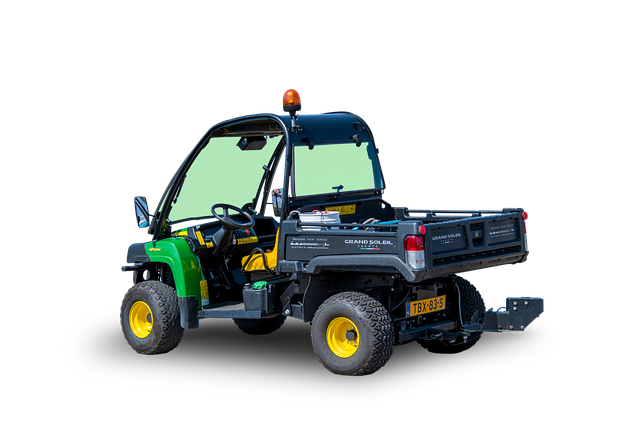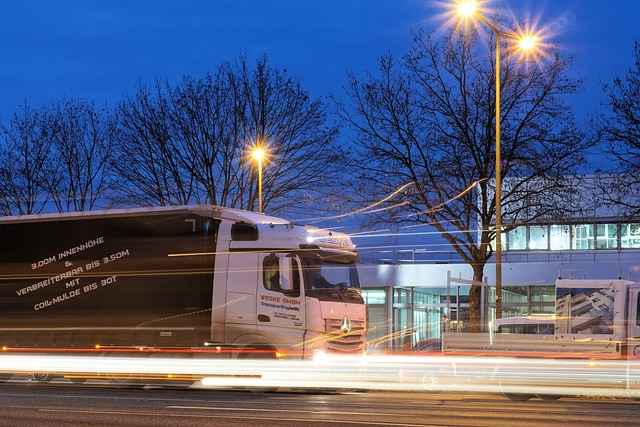Select Vehicle-to-Vehicle (V2V) Communication is transforming urban mobility through real-time data sharing for enhanced safety and efficiency. Integrated with smart grids, it optimizes travel patterns and promotes environmental sustainability. In emergency services, instant data transfer saves lives. This technology enables safer roads by improving situational awareness and reaction times. Businesses leverage V2V for cost savings and improved logistics, while consumers benefit from transparent vehicle history access, fostering trust and informed decision-making.
In today’s digital age, instant vehicle data access is transforming transportation. By harnessing Select Vehicle-to-Vehicle (V2V) Communication, cars can share real-time information seamlessly, revolutionizing safety and efficiency. This article explores the potential of V2V technology to unlock new possibilities: from enhancing safety through interoperability to optimizing logistics and empowering consumers with transparent data. Get ready to navigate a smarter, safer future on the roads.
- Unlocking Real-Time Data: V2V Communication
- Enhancing Safety through Vehicle Interoperability
- Optimizing Logistics and Routing Efficiency
- Empowering Consumers with Transparent Information
Unlocking Real-Time Data: V2V Communication

Vehicle-to-Vehicle (V2V) communication is transforming how we perceive and interact with our automotive ecosystem. By unlocking real-time data exchange between vehicles, this technology paves the way for smarter, safer, and more efficient urban mobility solutions. Each vehicle equipped with V2V capabilities can share and receive instant information about its surroundings, including speed, position, and even safety alerts. This collective intelligence creates a network effect that benefits not only individual drivers but also the broader community.
However, as we explore the potential of V2V communication, it’s crucial to address data privacy concerns. Balancing the need for real-time data sharing with the protection of personal information is essential. Long-range vehicle communication technologies must be designed with robust security measures to ensure that sensitive data remains secure and confidential, fostering trust among users. Additionally, smart grid integration can further enhance V2V’s capabilities, enabling coordinated travel patterns that contribute to energy efficiency and reduced congestion. This advancement not only benefits the environment but also plays a pivotal role in V2V’s application within emergency services, where instant data exchange can be a matter of life and death.
Enhancing Safety through Vehicle Interoperability

The future of safe roads lies in the seamless integration of vehicles through advanced communication technologies. By enabling Select Vehicle-to-Vehicle (V2V) Communication, cars can exchange data instantaneously, creating a network of interconnected mobility systems. This fosters a shared understanding of the surrounding environment, allowing for quicker reaction times and enhanced decision-making. For instance, if a vehicle detects an imminent collision, it can transmit this information to nearby cars, enabling them to take evasive actions or prepare for impact.
This level of interoperability goes beyond individual car safety features and contributes to the broader goal of connected car safety. Automotive wireless standards play a pivotal role in facilitating these connections, ensuring vehicles can communicate seamlessly using technologies like 5G and beyond. Wireless vehicle connectivity is not just a convenience; it’s a life-saving measure that promises to transform our roads into safer, more integrated networks.
Optimizing Logistics and Routing Efficiency

In today’s digital age, optimizing logistics and routing efficiency is no longer a mere luxury but an operational necessity. By integrating Select Vehicle-to-Vehicle (V2V) Communication technologies, businesses can harness real-time data to streamline their transportation networks. This innovative approach allows for dynamic routing, reducing congestion and fuel consumption, thereby contributing to both cost savings and environmental sustainability. With energy-efficient transportation at the forefront, smart cities are leveraging these emerging transport technologies to create seamless and efficient mobility solutions.
V2V communication enables vehicles to exchange information on speed, location, and intended routes, facilitating proactive decision-making. This data sharing not only optimizes individual trips but also improves overall traffic flow. As a result, businesses can enhance their delivery services, reduce delays, and better align with the evolving landscape of smart cities applications. By embracing these advanced transportation systems, companies are positioning themselves at the forefront of sustainable and intelligent mobility in the emerging transport technologies realm.
Empowering Consumers with Transparent Information

Empowering Consumers with Transparent Information
In today’s digital era, consumers are increasingly demanding transparency and access to real-time data when making significant decisions, particularly in highly regulated industries like automotive. Vehicle-to-Vehicle (V2V) communication is a game-changer in this regard, enabling safer vehicle interactions through ad-hoc networks that facilitate the instant sharing of critical data. This technology goes beyond mere connectivity; it equips consumers with the knowledge to make informed choices about their vehicles’ performance, safety features, and maintenance needs.
By leveraging V2V networking, consumers can gain insights into a vehicle’s history, including service records, accident reports, and current operational status, all of which are crucial for assessing long-term reliability and safety. This level of transparency fosters trust between buyers, sellers, and manufacturers, streamlining the decision-making process and enhancing overall consumer satisfaction. Moreover, real-time data sharing through V2V communication ensures that consumers are always aware of potential risks or benefits associated with a specific vehicle model, promoting safer driving experiences and better-informed choices.
By enabling vehicle-to-vehicle (V2V) communication, we unlock a treasure trove of real-time data that can transform how we navigate and interact with our transportation systems. From enhancing safety through interoperability to optimizing logistics and empowering consumers, the benefits are clear. Selecting V2V communication as a key technology can lead to safer roads, more efficient routing, and better-informed decisions for all.
